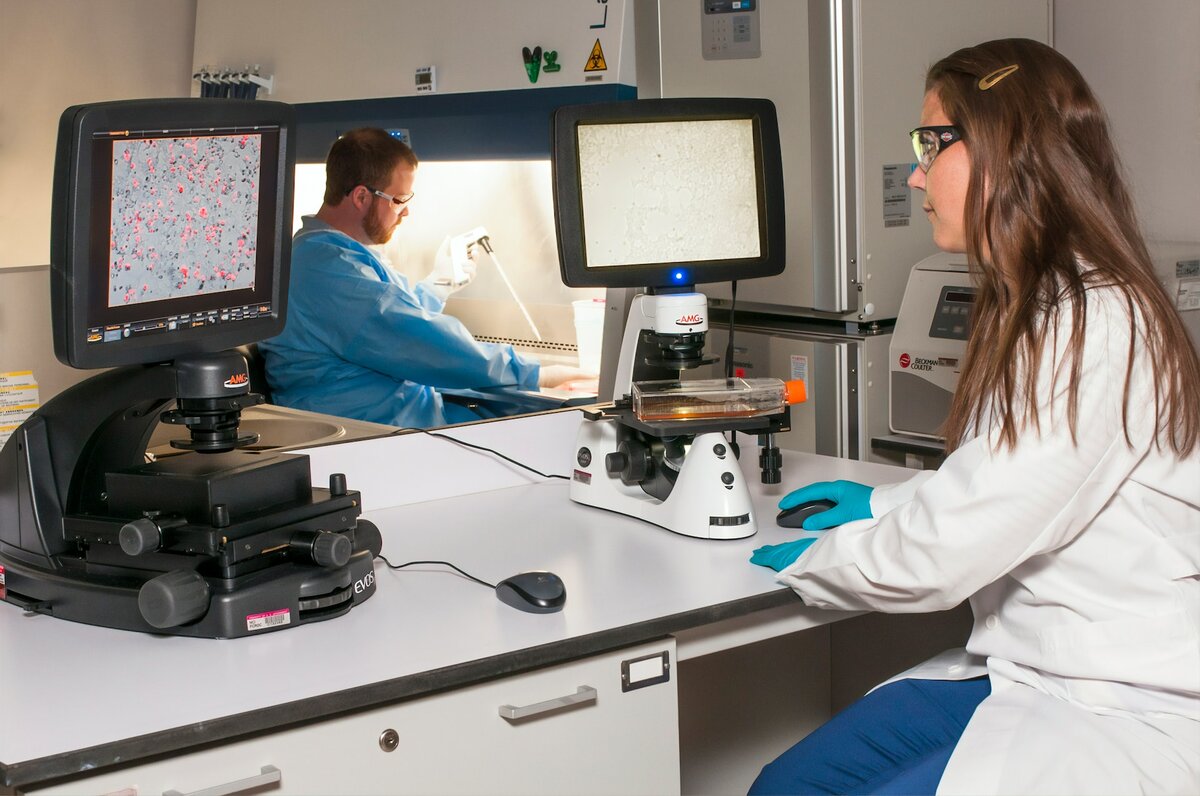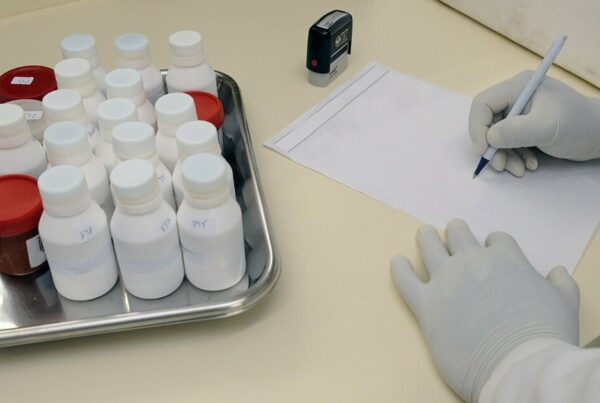There are some recent changes to the EU clinical trial regulations, affecting multiple stakeholders across the clinical trial industry. These promising new changes vow to improve transparency, and security and significantly reduce redundancy in the clinical trial process, paving the way for a much more attractive environment for clinical trials in the EU.
The major changes involve a new unified system of application that houses the process almost from start to finish, creating a safe and transparent arena for clinicians, patients, and sponsors alike. With some added requirements in the form of common-language reporting and strict timing regulations, the new process of running clinical trials should be improved on all fronts.
This process has already begun, but the transitional period will last until 2025. To help get there comfortably, we’re going to cover some of the new changes, what they mean for stakeholders, and how to get ready to adopt them.
An Overview of the New Regulation of EU Clinical Trials (EU CTR): Their Goals and Benefits
The new regulations apply to clinical trials in the EU. For clarity, it might be useful to report exactly what this means:
The EU CTR applies its new regulations to any EU clinical trial, which is defined as any clinical study which fulfills at least one of the following conditions:
- The assignment of the subject to a particular therapeutic strategy is decided in advance and does not fall within normal clinical practice of the Member State concerned.
- The decision to prescribe the investigational medicinal product is taken together with the decision to include the subject in the clinical study, or
- Diagnostic or monitoring procedures in addition to normal clinical practice are applied to the subjects.
As of Jan 2022, the EU has set in place a series of regulations devised as improvements in the way that clinical trials are regulated, with the hope that the process will become more efficient and transparent. Its main hope is to ensure consistent rules throughout Europe and a transformation of how assessments and supervision are implemented, using a streamlined, and single-entry information system: CTIS.
CTIS is designed to facilitate large-scale trials to address key health issues, such as COVID-19 and heart disease, as well as promoting research and innovation in the form of aggregation of knowledge and expert collaborations. Lastly, the platform should ensure that the EU and EEA provide an appealing prospect for the future of clinical research.
Every clinical trial approved by this system will be available to search by the public via a user-friendly website, meaning that transparency in clinical trial information is going to soon hit new heights.
These regulations are hoping to significantly reduce administration and application burdens for researchers and pharmaceutical companies alike. It will also streamline the prices for patient recruitment improve engagement between patients and trials in the EU and speed up safety reporting and authorization processes for clinical trials.
Although these changes have been set in motion, they cannot happen overnight, and the transitional period will last for the next few years. Here’s how that looks so far:
- Jan 2022: The new CTIS system is online.
- 2023: All new clinical trial applications are to use the system for their application.
- By 2025: All ongoing clinical trials must be using the CTIS system. This means trials that were initiated before 2022 must transfer.
The database itself will increase in terms of the data available for public searches, and the benefits to transparency that come with this should provide a cascade of positive effects for clinical trials in Europe. This means that it will grow in value as the regulations are adopted and ongoing. But what exactly is changing, and how will it affect those involved?
New EU Clinical Trial Regulation: The Details
The EMA is now host to a significant increase in responsibility. From dealing primarily with protocol data and study reports, the agency now takes on responsibility for data safety and monitoring, authorization of import, proof of payment, proof of insurance, and statements of compliance, among many others, and becomes a much more all-encompassing regulatory body.

- Single entry point – This will mean all submissions are logged and processed electronically through the EU Portal.
- New scope – This means the trials will now be focusing on interventional as well as low-interventional studies.
- New documentation for submission – These will come with new data requirements and include a lay summary for further transparency, interim results must now be reported, and a statement from the director of the facility. In addition to this, submissions will need to include inspection reports, copies of marketing media, and a statement on data protection, which must also now be provided.
- New templates for existing documents – These include standardized documents for protocols, labeling, and IMP dossiers.
- New timings – The new EU clinical trials regulations call for improvements in the reporting of timings, such as data on the first date of recruitment, the end of recruitment, and the trial master file.
- New GMP – These changes should improve information on expiry dates and other manufacturing practices.
- New reporting style – There is now a requirement to report trial information in common language, or ‘lay language’. This is a move to improve transparency and provide better access to clinical data to the public.
So, before this massive shift in regulation, each EU country would require its own application for clinical trials. The Single Entry Point has put an end to this redundancy with up to thirty authorizations from a single application.
The New EU Portal: An Overview
CTIS is now the business tool of the Clinical Trials Regulation. Essentially, every clinical trial step will be managed through this new EU Portal. This ambitious adaptation has already gone live, and now, the following steps are covered as part of an end-to-end process:
- CT Application – this includes the initial dossier, modifications, and any new MS.
- Assessment Reports – From all competent authorities and ethics committees
- Member states’ decisions – A record of Member State clinical trial authorization decisions
- Notifications – Trial significant dates, any serious breaches, etc.
- Inspection Reports – This is for both the EU countries involved and any third countries
- CT Results – The Lay summary, final results, etc.
- Penalties – In cases of non-compliance
The new system now combines a consolidation of all of these processes and administrative tasks, which serves two very significant purposes:
First, it vastly reduces the time and redundancy involved in the admin processes. Secondly, it allows for an unprecedented level of transparency. The public now has access to information via the EU database that was not previously available
This regulation shift replaces Clinical Trials Directive 2001/20/EC and immediately improves upon it with the ease of registration and application. This new drive is a push to create a more favorable environment to host clinical trials in the EU while maintaining and pushing for the highest standards of safety for participants and dramatically boosting transparency.
This new approach will affect the public, the sponsors, pharmaceutical companies, and patients themselves, in different ways. Many of the impacts will be positive, but there will certainly need to be some adjustments. Let’s break down how each stakeholder will be affected by the new EU clinical trials regulations.
Who Will the New EU Clinical Trials Regulations Affect?
The major stakeholders affected by the new regulations will be the sponsors, the researchers, the patients, and the general public. Here’s how some of the stakeholders will likely be affected:
- Sites and sponsors will need to quickly embrace the new adjustments to procedures. This means experiencing a learning curve as the new CTIS system becomes familiar. To begin with, we will likely see slower activation of trial sites as everyone gets adjusted.
- Recruiters will benefit significantly too. Researchers will be able to access patient pools in other countries without having to make another application, meaning rapid access to new and larger cohorts.
- Academics will have secure access to the portal, and all the data that comes with it, across borders and with a gradually growing database of information on trials of all kinds from the launch of the system.
- Patients will have increased transparency in the workings of the trials they are affiliated with, as well as the lay summaries that are now mandatory paperwork for each one. Patient safety is also an advantage of this system. The end-to-end nature of the system allows for enhanced security of data, better assessments, and better safety reporting.
- The public can also access data from clinical trials via the open-access website section of the CTIS portal. This will be a searchable clinical trial database that can be viewed by anyone with internet access. Again, the results of clinical trials will be written out in lay language, to boost public engagement.
So, for most, these are positive impacts. And the drawbacks of changing a system are to be expected. With the success of the new program, however, all drawbacks and challenges will simply be a temporary footnote in the history of a new age of medical research. Still, these challenges in the present can’t be overlooked, and there is some need to prepare and adjust.
How to Prepare for the New EU Clinical Trials Regulations
For each of the stakeholders listed above, we will list, where necessary, the right way to approach these new regulations. The vast majority of challenges will be faced by the sites and sponsors, and come not only from the new EU Portal but the new requirements trials. We will cover two of the major factors in the next section. Meanwhile, here is a brief overview of how stakeholders might be affected:
- Sites and sponsors need to adopt change management techniques to make the transition easier, but it does have to be understood that these changes will take some time. It’s important to remember that this is a long-term gain to efficiency, and the adjustment period should count as an investment in speedier processing down the line.
- Sponsors can also help to prepare by considering the organizational structure, IT systems, operational delivery, and implementation as part of the transitional period. This means future-proofing systems and policies and setting SOPs and training. This would be a good time to upgrade IT and sow other operational changes.
- Recruiters have some preparations to consider. Under the new EU clinical trials regulations, the start-up strategy needs to switch to a holistic approach to EEA country readiness. If, for example, a clinical trial agreement sits at odds with local laws, it’s important to re-evaluate the country list.
Academics must involve themselves with GLSP; the practice of common language reporting, and become familiar with the new necessity and the good practices associated with it. - The public and patients all have little to prepare for, aside from researchers directly involved in clinical trials, who will work alongside trials and will need to learn the new policies and approaches too.
As mentioned, the majority of the strain will be faced by sites and sponsors, as the most significant adjustments need to be made to organizational structures and operational adjustments. The major changes that relate to these, and how to prepare for them will be expanded next.
How Sponsors Must Prepare for the New EU Clinical Trials Regulations
The new regulations are well underway, but the transition to the point at which all trials need to be submitted and regulated by the new system is still in process, destined to be completed in early 2025. Meanwhile, to aid sponsors in their effective transition to this new normal, guidance is available on numerous changes. The three most significant are:
- The process of submission using the new CTIS system
- The new types of trial types
- The new requirement for lay-reporting
The CTIS system has been the main focus of this article so far, and there are plenty of resources available online for more information from EMA. However, we have some cursory information that may help prepare sponsors for each of these new changes.

Timelines for response to queries will be impacted by way of a withdrawal of all clinical trial applications that are non-responsive for a period of 12 days. This will be an automatic withdrawal as a result of failure to respond to any request for information.
Therefore, any revisions or redactions need to be made within the 12 days from the day of request in order to validate the application.
The Voluntary Harmonization Process has been discontinued and replaced with the new application protocols detailed in the new regulations.
The introduction of low interventional trials
Low-interventional trials are listed as a new definition under the current regulations, which now includes trials with Investigational Medicinal Products that are appropriately authorized and supported by medical literature. However, non-interventional trials are not covered in the new scope and will remain the responsibility of national legislation.
Therefore, protocols need to be reviewed, to ensure the definitions of clinical trials are up to date. This is one of the more pressing issues for preparation, as failure to update definitions could result in tremendous cost increases, delays, and hindered trials.
The need for lay-reporting
From the new EU Clinical Trial Regulation (“EU CTR”) 536/2014, Article 37, there is a requirement of the
“Public dissemination of trial results presented in lay language through the EU Database, a core element of the EU “Clinical Trials Information System” (“CTIS”), at the time of availability of the scientific Summary of Clinical Trial Results”
GLSP or Good Lay Reporting Practices are available to follow from the Clinical Trials Expert Group and provide a comprehensive set of recommendations on how to report in plain language. This adjustment implies a financial resource allocation too, and translations, transcriptions, and distribution outside the CTIS system need to be considered and prepared for.
The Lay Summary has distinct guidelines with ten elements to complete and acts as a strong resource for preparation for the new reporting regulations.
Conclusion
While the new EU clinical trials regulations have already come into effect, there is still an ongoing transitional period that will last until all trials are integrated with the new CTIS system at the end of January 2025. This means that there’s still time for sponsors and sites to prepare for the final adjustments and the benefits that come with this.
The new regulations factor in some groundbreaking advancements in clinical trial transparency, public and patient engagement, and all of the benefits that come with an end-to-end, unified system. Some of these benefits include improved security, increased recruitment options, and a database of valuable information that can be accessed by all stakeholders.
Still, the adjustments won’t come easy for everyone. Stakeholders with the most invested in the clinical trial industry, such as sites and sponsors, stand the most to lose in the short term and will need to adjust quickly. However, these costs reflect an investment in the future of medical science that should provide a rapid return in the simplicity, accuracy, and cost-effectiveness of the next generation of clinical trials.







